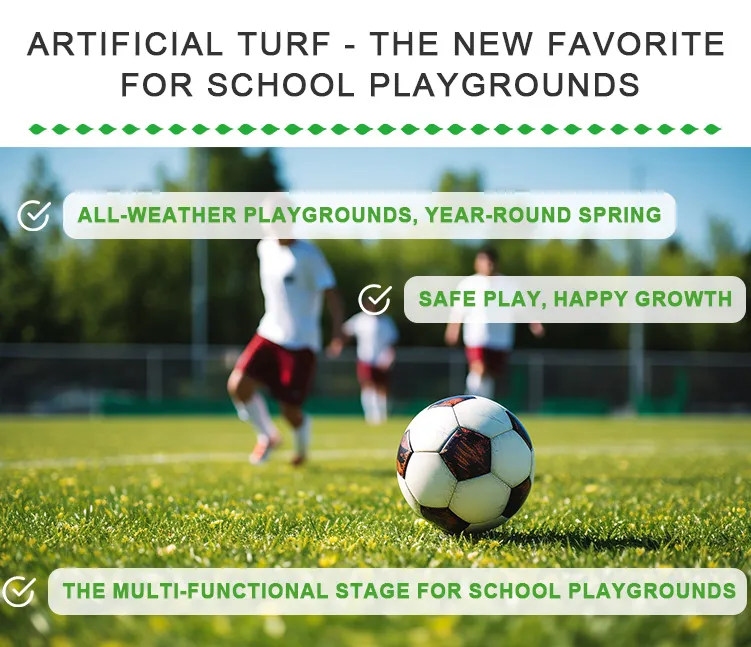
- Afrikaans
- Arabic
- Belarusian
- Bengali
- Czech
- Danish
- Dutch
- English
- Esperanto
- Estonian
- Finnish
- French
- German
- Greek
- Hindi
- Hungarian
- Icelandic
- Indonesian
- irish
- Italian
- Japanese
- kazakh
- Rwandese
- Korean
- Kyrgyz
- Lao
- Latin
- Latvian
- Malay
- Mongolian
- Myanmar
- Norwegian
- Persian
- Polish
- Portuguese
- Romanian
- Russian
- Serbian
- Spanish
- Swedish
- Tagalog
- Tajik
- Thai
- Turkish
- Turkmen
- Ukrainian
- Urdu
- Uighur
- Uzbek
- Vietnamese
Understanding the Expenses Involved in Installing Artificial Grass
Sep . 28, 2024 14:53 Back to list
The Cost of Artificial Grass An In-Depth Analysis
Artificial grass has gained immense popularity in recent years, transforming landscapes and sporting fields across the globe. As homeowners and businesses alike look to enhance their outdoor spaces with low-maintenance alternatives to natural grass, understanding the costs associated with artificial grass is essential. This article delves into the factors that influence the cost of artificial grass, the overall economic benefits, and some considerations that potential buyers must keep in mind.
Initial Purchase and Installation Costs
The first aspect to consider when evaluating the cost of artificial grass is its initial price. On average, the cost of artificial turf ranges from $5 to $20 per square foot, depending on the quality, brand, and type of grass chosen. Higher-end options that mimic natural grass closely can be positioned at the higher end of this spectrum, while more budget-friendly alternatives can be found at the lower end.
Installation costs also play a significant role in the overall expense. Professional installation may cost between $2 and $8 per square foot. While some homeowners might consider a DIY approach, it is worth noting that proper installation is critical for ensuring the longevity and functionality of the turf. Factors such as the condition of the underlying soil, drainage requirements, and the complexity of the installation area will affect the final installation cost.
Long-Term Financial Considerations
While the initial investment in artificial grass might seem steep, the long-term savings can be significant. One of the most attractive features of artificial grass is its low maintenance requirement compared to natural grass. Homeowners can save on expenses related to mowing, fertilizing, and pest control. In addition, because artificial grass does not require watering, individuals can see substantial reductions in their water bills, especially in regions prone to drought.
Moreover, the durability of artificial turf means it can last between 15 to 25 years with proper care. This longevity translates into lower replacement costs over time compared to natural grass, which requires regular reseeding, patching, and more frequent replacements. Thus, when evaluating the cost of artificial grass, it is essential to consider not only the upfront investment but also the cumulative savings over the lifespan of the product.
artificial grass cost

Additional Factors Affecting Cost
Several additional factors can influence the overall cost of artificial grass. For instance, the type of turf selected will significantly impact the price. Some artificial grasses are designed for specific purposes, such as athletics, pet areas, or playgrounds, each having distinct pricing. Specialized turf may come equipped with features like enhanced drainage systems or soft cushioning, which can lead to increased costs.
Geographic location can also play a role in the pricing of artificial grass. Areas with a higher cost of living might see elevated prices for both the materials and installation services. Seasonal demand fluctuations can influence costs as well; for instance, prices may rise during peak landscaping seasons.
Environmental Considerations
Interestingly, while the cost of artificial grass can be higher upfront, many proponents argue its environmental benefits may counterbalance the expenses. Artificial turf does not require harmful pesticides or fertilizers, which can reduce the ecological footprint of outdoor maintenance. Additionally, the decreased water consumption is crucial in addressing water scarcity issues in many regions.
Conclusion
In summary, the cost of artificial grass encompasses a range of factors, including initial purchase and installation costs, long-term savings from maintenance and water reduction, and environmental considerations. While the upfront costs may appear daunting, the benefits over time can make artificial grass a wise investment for many homeowners and businesses. As the demand for sustainable landscaping solutions continues to rise, understanding the dynamics of artificial grass costs will empower consumers to make informed decisions that enhance their outdoor spaces while considering their budget and environmental impact.
-
The Benefits of Artificial Turf for Indoors
NewsJul.15,2025
-
How Artificial Grass Suppliers Ensure Quality Products
NewsJul.15,2025
-
Artificial Grass and Pets: A Space for Relaxation
NewsJul.08,2025
-
Balcony & Outdoor Decoration with Artificial Grass
NewsJul.08,2025
-
Best Indoor Artificial Grass for Home
NewsJul.07,2025
-
Best Pet Turf for Dogs: Safe & Durable Artificial Grass Options
NewsJul.07,2025
Products categories









